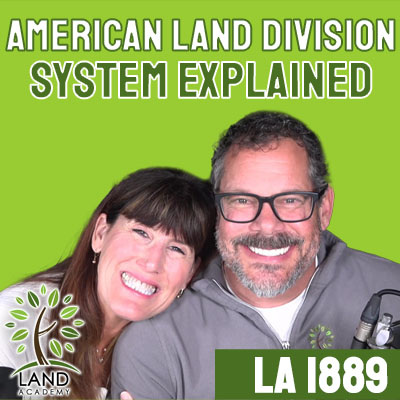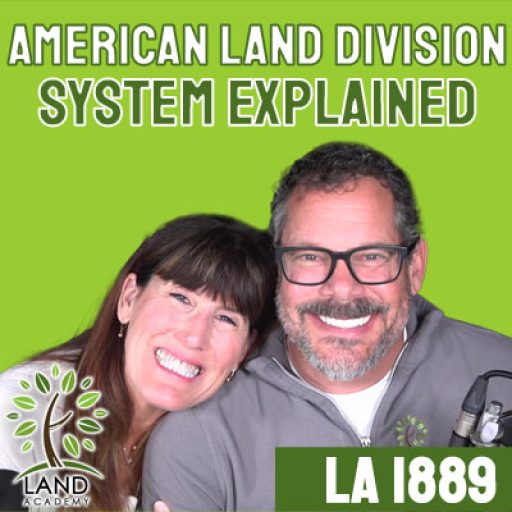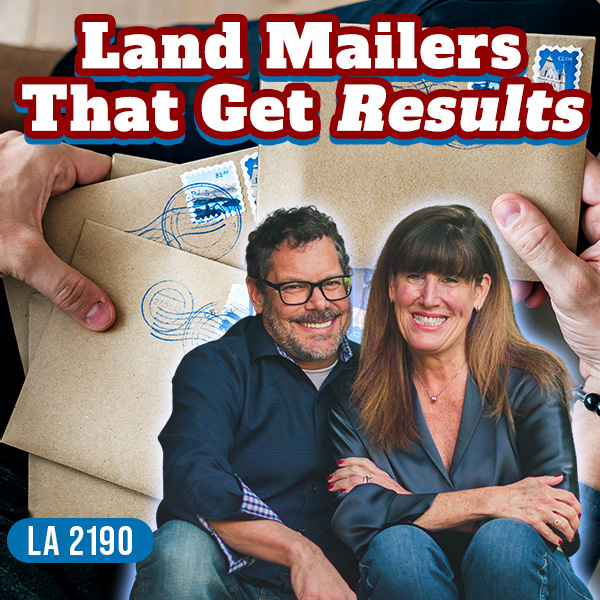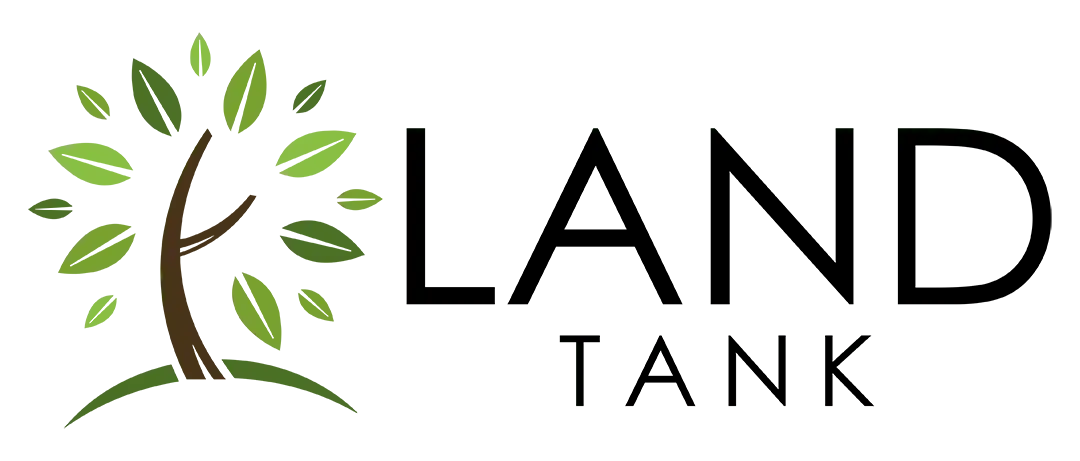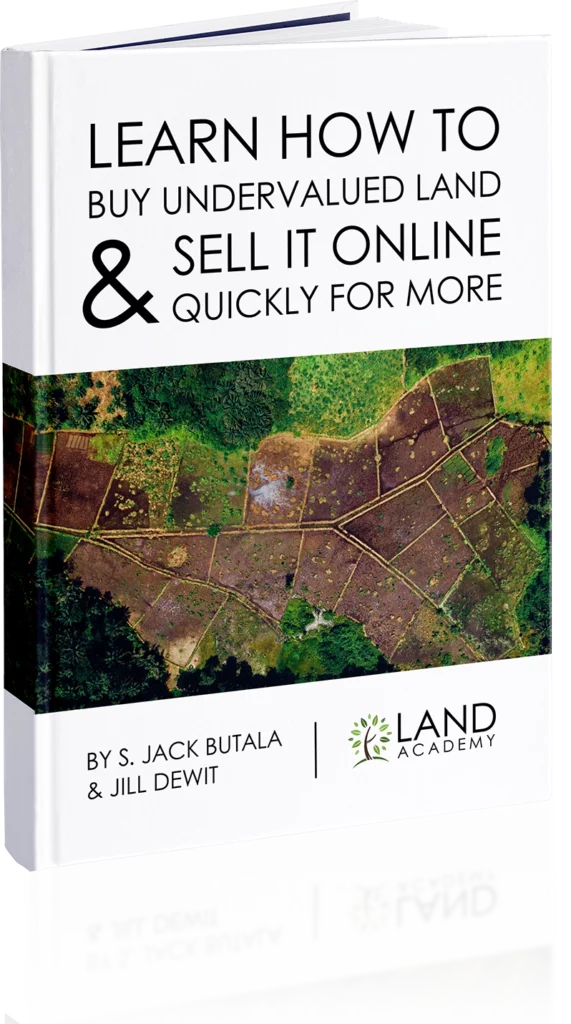Steven Jack Butala:
… This drive. There we go. Steve and Jill here.
Jill K DeWit:
Hello.
Steven Jack Butala:
Welcome to the Land Academy Show, entertaining land investment tech. I’m Stephen Jack Patella.
Jill K DeWit:
And I’m Jill DeWit, broadcasting from the Valley of the Sun.
Steven Jack Butala:
Today I talk about the American Land Division system, explained.
Jill K DeWit:
I notice you took out the, before Jill and I, today. I,
Steven Jack Butala:
Yeah, I’m going to talk about this because Jill’s not going to talk about it. Jill doesn’t care about this topic and you might not, also. This topic is one of those things where you just need to know, you need to be aware of this system. You don’t need to repeat it, you don’t need to learn it, and you don’t need to care. You just need to know the basic stuff. So we’ll get through it quickly together for you. Before we get into it, let’s take [inaudible 00:00:44].
Jill K DeWit:
I’ll be over here.
Steven Jack Butala:
… Posted by one of our members on the landinvestors.com online community. It’s free. But before we get into that, I’m hoping that you know by now we have a full blown commercial printing company that Jill and I created solely to help you get inexpensive direct mail offers in the hands of sellers fast. It’s called Offers 2 Owners. Offers the number two owners.com. Jill and I set this company up several years ago and now we actually share it. The exact same people that we put in place to do our mailers, we share it with members and non-members alike. Recently I looked at it, we mail between 700 and 800,000 offers a month and we do everything at any level of service that you want. We can just get it in the mail for you or we can do the entire mailer for you. Call (800) 725-8816, which also, so is is (800)JACKJILL, I think.
Jill K DeWit:
That’s a different number.
Steven Jack Butala:
Oh, nevermind. Or email support at offers2owners.com for more information.
Jill K DeWit:
All right. Is this the same Will. Will’s asked a lot of good questions. Okay, so Will is back from yesterday because Will has a plethora of good questions in here, which I think is awesome and Will wrote. “Okay. Neighbor letter question. I’ve heard that mailing to everyone within a one mile radius is the recommendation. Got it. For those that are directly connected IE to the property, should it be a different letter? Maybe more details, maybe more personal. Seems like it could help. For example, I have a parcel that is a neighbor with a nicely built home and then a mobile home across the street. I considered writing, even hand addressing a letter to the neighbor with the more expensive home to see if they would like to add an acre to their property and control what happens around them. How have you all handled your neighbor letters?”
To be honest, can I answer this, please?
Steven Jack Butala:
Yes, please.
Jill K DeWit:
Okay. I have honestly, Will, I have done that and I would do that. I totally agree with that. My reason was, I had a property that there was total physical access, thought there was legal access. It turned out it wasn’t real legal access. It was really a weird situation. Even though there was a street named, it was odd and there was even a cemetery back there that people were using this. All the signs would tell you it’s physical and legal to be going to the cemetery back in there, but it technically wasn’t. So the good news is, it was there, it existed. I just needed a piece of paper from somebody to agree on it. So I isolated the neighbors and I literally, personally, it didn’t take me long at all. Literally made a cute little map and I highlighted for each of the neighbors and I needed to ask for physical access.
I said, “Here’s my lot, here’s your lot. Mine’s yellow, yours is green, whatever it is, and I’m reaching out to you for two reasons. One, would you please, I just need you to sign off on granting access.” That was one. And then two was, “Hey, I’m putting this thing up for sale. Are you interested?” Right. So what ended up happening was nobody reached out to buy it, but I had two of them agree to the access. No problem. Wonderful. Now here’s the end of the story. I actually had it listed with a broker and so did I go get the access? Did I go through all the steps and everything? Nope, I did not. All I did was present that proof in the posting with my broker. So our buyer knew that, “Hey, all you got to do is reach out to this guy or this guy. They both will give you access. Here’s a copy of the email letter, whatever it is, fill in the blank and they’ll hook you up.” So that’s how that goes.
So that’s one way. And then so for the outer circle, so that was my neighbors and the reason I needed that, and it was a great little way to talk to them like you’re doing for the rest of the planet. I’m not going to, for the 500 people that are within the mile radius or two mile or five mile, whatever makes sense, I’m not going to hand write or hand address or anything like that. I’m going to do a good old fashioned offers to owners neighbor letter and just get that out and it’s still very effective. That’s the end of my story.
Steven Jack Butala:
Today’s topic, American Land Division Explained. This is why you’re listening. Every large city in the country is based off of the public land survey system, PLSS, where there’s a baseline, it’s an X picture and X from going east to west, there’s baseline. In fact, some cities including Phoenix, have baseline road and then running north south is a meridian. Some cities have Meridian Road. We do not here in Phoenix, but that center point where that X crosses is the point where all legal descriptions of land in that area are derived. That’s the center point. It’s divided up into what’s commonly known as the range township system, and it’s squares. There’s squares that come out from the center point north, south, east, west. Within each one of those squares is 36 square miles. One square mile is 640 acres and it just sprawls outward. And so when you look at land, you will see if it’s entirely and completely unsubdivided, the legal description will say Section 16 ranged six west township to north, for example. And you can trace that back all the way back to that center point. What ends up happening in reality is we don’t buy sections.
Jill K DeWit:
That’s 640 acres. That is a section.
Steven Jack Butala:
Yeah, 640 acres equals a section equals one square mile. They’re all exactly the, it’s different ways of describing the same thing. Before subdivisions, back in the day, you would take that 640 acres and you would cut it in half. And so then you would have, the legal description would read the north half of section, whatever range, whatever township, whatever. And then you would cut that again. So that 320 acres is now 160. It would be the east half of the south half and on and on and on. So you can get that down to an acre and a quarter before it really gets, the description gets too long because this was limiting in the 18 hundreds. People started to, and this was all started to happen in Manhattan in the 17 and 18 hundreds, enacting subdivisions where you’re taking properties that are smaller than that, whatever, two or three acres in making an entire subdivision, which is now it’s lot six of block 14 in subdivision pretty land. That’s the system explained. You just need to be aware of it. This is not the longest show or the most interesting for sure. Certainly not for Jill,
Jill K DeWit:
But that’s not bad.
Steven Jack Butala:
But that’s it.
Jill K DeWit:
Why? That’s not bad. It’s technically, too, when you see those descriptions like you like the north half of the south half of the left quarter, you see it breaks it down like that. It’s pretty… There’s a lot of good stuff you can Google and find online. Those are meets and bounds descriptions. It’s pretty interesting. I love it. I get excited. It’s kind of fun when you see those. Sometimes, too, if you’ve been in this like we have, you’ve seen all kinds of crazy legal descriptions. Even back in the olden days, you start from this tree and you go to this rock and there’s still some I’ve come across to Farmer Johnson’s south corner.
Steven Jack Butala:
You see that in Texas all the time.
Jill K DeWit:
It’s hilarious. And then what’s great is good luck finding it, right? Well there’s a parcel fact came in, we sold that.
Steven Jack Butala:
But well, why do I know this? Why the heck would I-
Jill K DeWit:
And why do I care?
Steven Jack Butala:
… Ever know this, right? Because, believe it or not, I started buying and selling land before Google Earth or before any of these tools where you could find property. You had to look at the legal description, you had to order the plat maps, send a check to the county. They would send you whatever you requested, the plat maps.
Jill K DeWit:
A real map that you’d roll out on your desk,
Steven Jack Butala:
Put it out on the desk, and you would find the property that you were thinking about buying.
Jill K DeWit:
Yep. See where the road is.
Steven Jack Butala:
And you would read the description backwards and find out where the baseline meridian is.
Jill K DeWit:
Yeah. I remember that.
Steven Jack Butala:
Which would force me, by the way, to now that I know the area, buy more property there. So there is some positive to that old school way.
Jill K DeWit:
Yeah, it’s pretty darn cool when you think about it. It’s pretty wild.
Steven Jack Butala:
We still, to this day, rewrite descriptions. We just did a deal where we bought five acres and cut it into four acre and a quarter parcels and we had a survey, rewrote the descriptions and created four APNs out of one and sold it for a lot more than we paid.
Jill K DeWit:
So that’s what you need to know about. It can be a money making thing. Is it fast? Can you do it overnight? No. Because you got to get someone out there to do… The right thing to do, too, by the way, if you really want to do this is hire a company that has been doing this the whole time.
Steven Jack Butala:
Land Plan Engineer.
Jill K DeWit:
And they know everybody at the county and everybody at the county knows them and they can get it done and they know the exact forms and how to get it through and they go and stand in line and probably get to the front of the line because they have a relationship with them and they can get it done. Will it cost you $500 or a thousand dollars more? Yeah. Is it worth it? Yeah, totally. They will do it all for you and it’s really cool. And then you walk away with your one APN is now four APNs or whatever you want it to do.
Steven Jack Butala:
Now, you have four things to sell instead of one.
Jill K DeWit:
Exactly.
Steven Jack Butala:
It’s a beautiful thing.
Jill K DeWit:
It really is great. It’s cool. Happy you could join us today five days a week you can find us here on the Land Academy Show tomorrow.
Steven Jack Butala:
tomorrow, The episode on the Land Academy Show is called How Much Land Acquisition due Diligence is Too Much? You are not alone in your real estate ambition. Jill’s going to talk all about that.
Jill K DeWit:
Yeah. J.
Steven Jack Butala:
She has a few professional peeves and spending too much time and digging and digging and digging into this piece of property to try to find something wrong is one of her peeves.
Jill K DeWit:
Or just try to find too much about it. It’s like coming up for air two weeks later and all you’ve been doing is due diligence and you’ve ignored everything else in your business. That can happen. And I’m here to save you. Thank you for tuning in. By the way, Jack and I are very aware that not everyone has a hundred grand lying around to buy land. So just so you know, we fund many Land Academy members first and then non-members land deals every single week. They need to be good, by the way. And I want to know where you got it by the way. So there you go. And what am I talking about working to find out more, go to land funding.com. And then in addition to us, our community has combined, man, this number’s probably outdated, but when we were talking about this, I knew about $40 million floating around that our people were using to fund other Land Academy member deals. So if you want more information, just send a note to support@landacademy.com.
Steven Jack Butala:
We are Jack and Jill. Information. Inspiration. To buy undervalued property.


